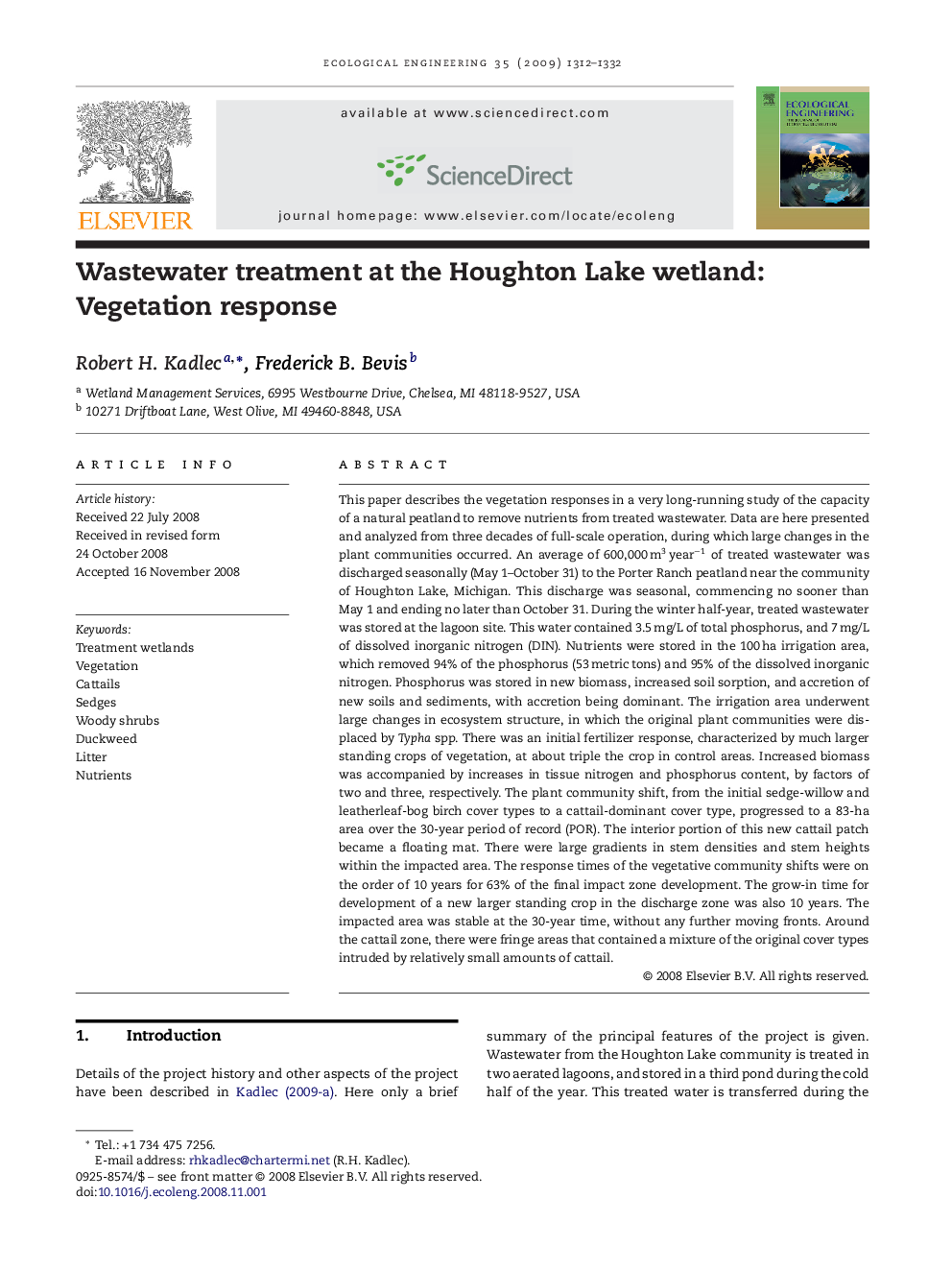| Article ID | Journal | Published Year | Pages | File Type |
|---|---|---|---|---|
| 4390618 | Ecological Engineering | 2009 | 21 Pages |
Abstract
This paper describes the vegetation responses in a very long-running study of the capacity of a natural peatland to remove nutrients from treated wastewater. Data are here presented and analyzed from three decades of full-scale operation, during which large changes in the plant communities occurred. An average of 600,000 m3 yearâ1 of treated wastewater was discharged seasonally (May 1-October 31) to the Porter Ranch peatland near the community of Houghton Lake, Michigan. This discharge was seasonal, commencing no sooner than May 1 and ending no later than October 31. During the winter half-year, treated wastewater was stored at the lagoon site. This water contained 3.5 mg/L of total phosphorus, and 7 mg/L of dissolved inorganic nitrogen (DIN). Nutrients were stored in the 100 ha irrigation area, which removed 94% of the phosphorus (53 metric tons) and 95% of the dissolved inorganic nitrogen. Phosphorus was stored in new biomass, increased soil sorption, and accretion of new soils and sediments, with accretion being dominant. The irrigation area underwent large changes in ecosystem structure, in which the original plant communities were displaced by Typha spp. There was an initial fertilizer response, characterized by much larger standing crops of vegetation, at about triple the crop in control areas. Increased biomass was accompanied by increases in tissue nitrogen and phosphorus content, by factors of two and three, respectively. The plant community shift, from the initial sedge-willow and leatherleaf-bog birch cover types to a cattail-dominant cover type, progressed to a 83-ha area over the 30-year period of record (POR). The interior portion of this new cattail patch became a floating mat. There were large gradients in stem densities and stem heights within the impacted area. The response times of the vegetative community shifts were on the order of 10 years for 63% of the final impact zone development. The grow-in time for development of a new larger standing crop in the discharge zone was also 10 years. The impacted area was stable at the 30-year time, without any further moving fronts. Around the cattail zone, there were fringe areas that contained a mixture of the original cover types intruded by relatively small amounts of cattail.
Related Topics
Life Sciences
Agricultural and Biological Sciences
Ecology, Evolution, Behavior and Systematics
Authors
Robert H. Kadlec, Frederick B. Bevis,
